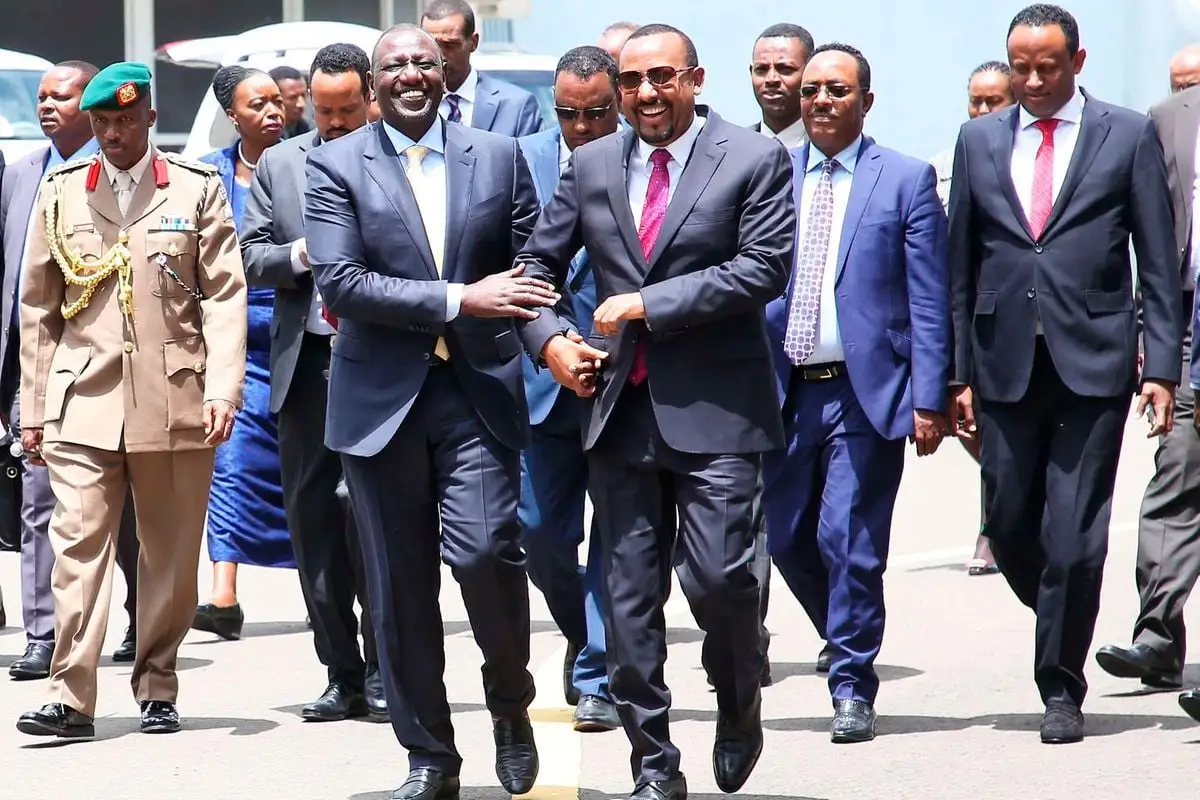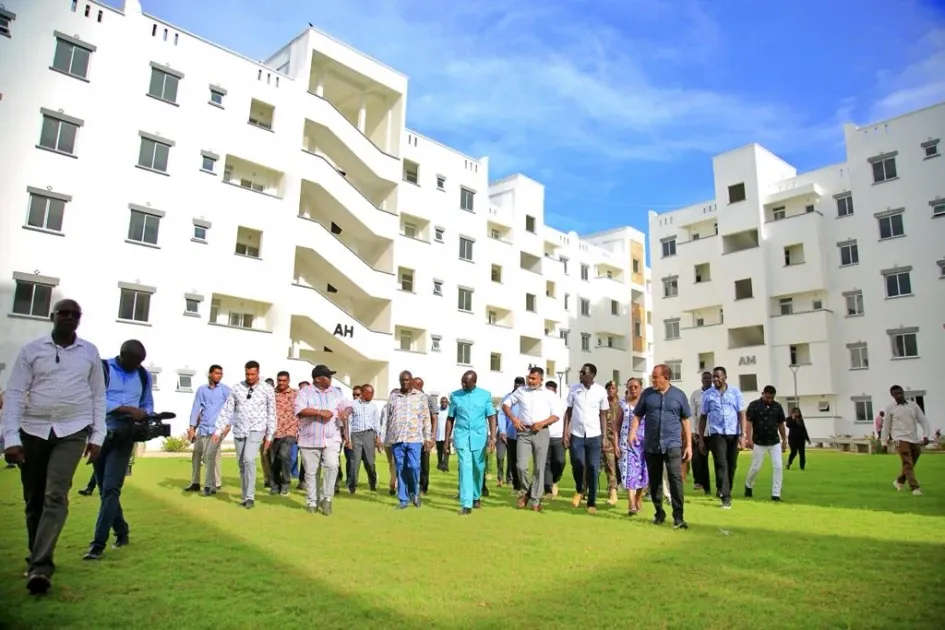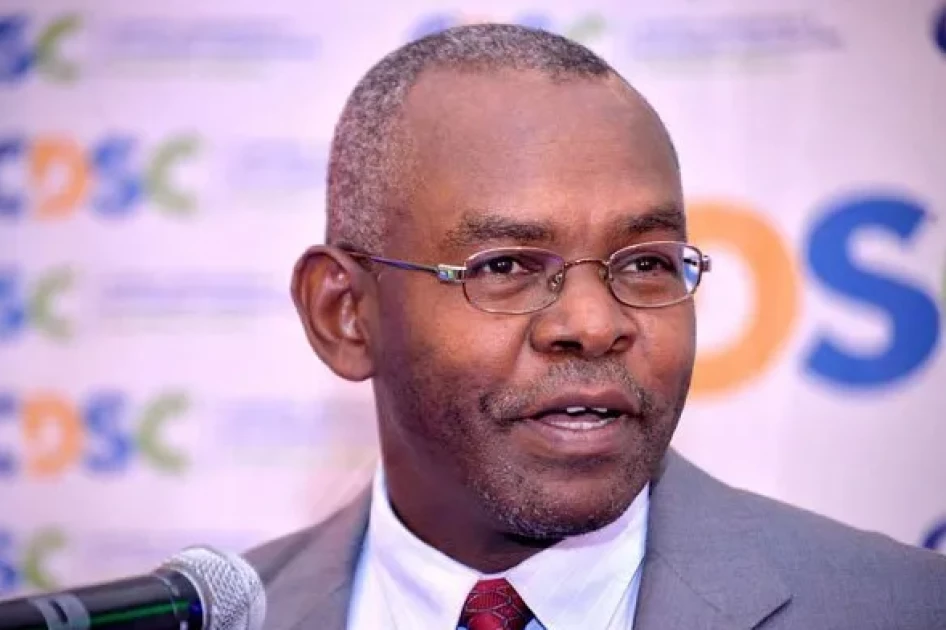In a dramatic shift in regional economic fortunes, the International Monetary Fund now projects Kenya’s gross domestic product will reach USD 132 billion in 2025, surpassing Ethiopia’s forecast USD 117 billion and marking Kenya as East Africa’s largest economy. This reordering of the pecking order reflects contrasting currency moves, divergent policy trajectories, and broader global headwinds. While Ethiopia wrestles with a sharp birr devaluation and debt-restructuring talks, Kenya has ridden a wave of shilling strength, booming remittances, and record exports. Yet the headlines mask both countries’ underlying vulnerabilities—and the real human stories behind the numbers.
From Birr Devaluation to Shilling Rally
Ethiopia’s long-standing currency peg was finally loosened in July 2024, ushering in a managed‐float for the birr. In the months that followed, the currency plunged more than 55 percent against the U.S. dollar. The devaluation achieved its diplomatic goal—unlocking a USD 3.4 billion IMF loan and USD 16.6 billion in World Bank financing—but it also sent import costs soaring, stoked domestic inflation, and squeezed urban households already struggling with food‐price shocks.
Kenya, by contrast, witnessed its shilling emerge as the world’s best-performing currency over the same period, appreciating roughly 21 percent against the greenback. That surge was driven by a combination of higher interest rates than peers, a successful USD 1.5 billion Eurobond sale in February 2025, and robust inflows of remittances and export revenues. With the macro backdrop stabilizing, the central bank trimmed its benchmark rate modestly—but left real yields attractive enough to draw in foreign portfolio investors.
Diaspora Dollars: A Record Year for Remittances
One of the unsung pillars of Kenya’s GDP surge has been the remittance channel. In 2024, Kenyans living abroad sent home an all-time high of Ksh 651.7 billion (approximately USD 4.94 billion), an 18 percent jump from the prior year’s Ksh 543.3 billion. December alone saw USD 445.4 million arrive—fueling festive spending and boosting household consumption at a moment when many governments struggled to incentivize local demand.
The United States remains the leading source, accounting for 51 percent of total flows, followed by the United Kingdom, Middle East Gulf states, and erstwhile regional diaspora hubs in South Africa and Australia. Tech-enabled platforms—mobile‐money integrations, online wallet services and blockchain‐based remittance startups—have made it faster and cheaper for Kenyans to send funds home, narrowing the spread between what migrants pay and families receive.
Exports Hit New Highs
Kenya’s merchandise exports also achieved record levels in 2024, reaching USD 8.246 billion, underpinned by strength in agriculture (tea, horticulture, coffee), manufacturing (apparel, plastics, leather goods), and nascent value-added sectors like processed foods and chemicals. July 2024 alone was a standout month, with exports peaking at USD 747.4 million.
- Horticulture: Fresh‐cut flowers and fruits, long the engine of Kenya’s agricultural export sector, rebounded strongly after the pandemic slump. Improved air-cargo capacity out of Nairobi and targeted marketing campaigns in Europe and Asia helped secure premium prices.
- Tea and Coffee: While global tea prices softened, Kenyan producers shifted toward specialty blends and organic certifications, carving out higher-margin niches. Coffee cooperatives in Nyeri and Kirinyaga counties reported record auction prices, buoyed by single‐origin demand from roasters in North America and Japan.
- Apparel: Factories in Athi River and Nairobi’s Export Processing Zones expanded output for U.S. fast-fashion brands. Competitive labor costs, preferential access under the African Growth and Opportunity Act (AGOA), and improvements in transportation infrastructure all contributed to the sector’s resilience.
The export boom not only drove headline GDP figures but also supported job creation across the informal sector—truck drivers, cold‐chain logistics workers, packhouse staff and small traders whose livelihoods hinge on buyer orders and foreign currency receipts.
Macroeconomic Fundamentals: Growth with Caution
With Kenya’s GDP poised to rise from USD 121 billion last year to USD 132 billion in 2025, real growth is expected to land in the high-fives percentage range—outpacing much of Sub-Saharan Africa. Inflation has moderated toward the central bank’s 5 percent to 7 percent target band, and foreign-exchange reserves sit at comfortable levels—enough to cover nearly five months of import bills.
But these aggregates conceal uneven experiences. Smallholders in marginal agricultural zones continue to face erratic rains and rising input costs. Urban wage earners grapple with higher fuel and housing costs. And the investor community, while broadly upbeat, keeps one eye on global trade tensions and potential “speed bumps” from upcoming elections and fiscal retrenchment.
The IMF Program and the Finance Bill Backlash
In September 2023, Kenya signed a four-year, USD 3.6 billion program with the IMF, aimed at shoring up public finances, enhancing revenue collection and laying the groundwork for inclusive growth. Yet, as the government pursued new tax measures under the controversial Finance Bill 2024—raising levies on fuel, telecommunication services and financial transactions—public protests erupted in major towns and cities. Merchants, transport operators and civil‐society groups decried the burden on the poor and informal workers.
With parliamentary pushback and widespread unrest, the administration was forced to shelve key provisions. The IMF program was prematurely terminated, costing Kenya about USD 850 million in forgone financing. Negotiations are now underway for a successor arrangement, likely with more emphasis on protecting vulnerable households while preserving fiscal consolidation.
Despite the hiccup, the breach of trust also underscored the fragility of reform politics: even well-designed measures can founder if governments fail to build consensus and communicate transparently. For many observers, the episode offers a lesson in the political economy of adjustment—especially when incomes remain stretched and inequality high.
Ethiopia’s Economic Crossroads
Ethiopia’s journey from USD 143 billion in GDP in 2023 down to a projected USD 117 billion in 2025 is a saga of currency realignment and external financing deals. The birr’s devaluation made Ethiopian exports more price-competitive on world markets—boosting shipments of coffee, leather goods and textiles—but it also magnified the cost of imported fuel, machinery and raw materials. Inflation surged beyond 30 percent at its peak, eroding urban purchasing power and raising concerns about social stability.
With external debt topping USD 28.9 billion, Addis Ababa has entered talks with bilateral and commercial creditors under the Common Framework for Debt Treatment. Restructuring at least half of that stock could free up fiscal space for infrastructure investment and social programs, but the process is protracted and politically sensitive.
Like Kenya, Ethiopia has sought an IMF-backed stabilization loan—in this case, USD 3.4 billion under a 2024 Extended Credit Facility. But disbursements hinge on meeting structural benchmarks: further loosening of price controls, reform of state enterprises and improvements in financial‐sector regulation. Against that backdrop, Ethiopia’s 2025 recovery will depend heavily on the pace and credibility of those reforms, as well as the global demand for its exports.
People Behind the Numbers
The “largest economy” label may grab headlines, but it is ordinary Kenyans and Ethiopians who feel the day-to-day impact:
- Mercy Maina, a tea-factory supervisor in Kericho, Kenya, celebrated when her cooperative’s average per‐kilogram earnings rose by 20 percent in late 2024. “We earned enough to fix our processing lines and still had a little left over for schools and clinics,” she says. Yet she worries about the cost of fertilizer and potential cuts if global tea prices slip again.
- Tsedale Alemu, an Addis Ababa café owner, cut her coffee-bean imports by 30 percent last year after wholesale prices soared. She pivoted to locally roasted varieties and introduced a loyalty app to retain customers—“we had to innovate or close our doors,” she explains.
- John Kamau, a Nairobi‐based software engineer who returned from Silicon Valley in 2023, invested in a mobile-lending startup. He says the shilling’s strength helped his team secure cheaper development tools and cloud services, but higher electricity tariffs remain a headache for data centers.
These stories illustrate that while macro-indicators matter, it is the cumulative adjustments by millions of workers, entrepreneurs and households that ultimately shape economic resilience.
Regional Integration: The AfCFTA Opportunity
Both Kenya and Ethiopia stand to benefit from the African Continental Free Trade Area, which seeks to eliminate tariffs on 90 percent of goods and harmonize commercial rules across 54 countries. Intra-African trade currently hovers around 15 percent of the continent’s total but has accelerated in sectors like processed foods, pharmaceuticals and electronics.
Kenyan apparel makers now source more textiles from Ethiopia and Tanzania, while Ethiopian leather exporters eye markets in South Africa and West Africa. Harmonized customs procedures, mutual recognition of standards and cross-border digital-payment solutions could boost these flows—providing fresh markets that help offset any slowdown in the United States, Europe or Asia.
Looming Risks and Policy Imperatives
Despite Kenya’s ascendancy in the GDP rankings, both countries face headwinds:
- Global Trade War: The IMF has warned that higher U.S. tariffs could trigger a demand shock among trading partners. Sub-Saharan Africa’s growth forecast was cut to 3.8 percent in 2025—the slowest since the COVID-19 pandemic—as agricultural and mineral exporters brace for weaker pricing.
- Climate Vulnerability: Droughts in the Horn of Africa and floods in East Africa threaten staple-crop harvests, water supplies and energy generation from hydropower. Adapting to these extremes requires investment in resilient infrastructure and risk-transfer mechanisms like weather-index insurance.
- Debt Sustainability: With public-debt-to-GDP ratios near or above 70 percent in both Kenya and Ethiopia, governments must balance borrowing to fund growth with the need to maintain creditor confidence. Revenue mobilization—through efficient tax collection, formalization of the informal sector and prudent public-spending reviews—is critical.
- Political Uncertainty: Kenya’s general elections in 2027 and Ethiopia’s ongoing peace and federal-structure debates present both democratization opportunities and potential flashpoints for instability. Clear governance frameworks and inclusive dialogue can help mitigate violent disruptions that derailed growth in past cycles.
Looking Ahead: Sustaining the Lead
Kenya’s elevation to the top of East Africa’s economic league table is a milestone—but not a final destination. To capitalize on this achievement, Nairobi must:
- Deepen Structural Reforms: Streamline business licensing, reform land laws, tackle graft, and enhance contract enforcement to attract diversified foreign direct investment beyond traditional sectors.
- Invest in Human Capital: Expand technical and vocational training, boost STEM education and strengthen healthcare systems to equip the workforce for a rapidly digitizing economy.
- Promote Value Addition: Encourage agro-processing, pharmaceutical manufacturing and renewable-energy equipment assembly to move up global value chains and create higher-paying jobs.
- Strengthen Regional Corridors: Upgrade transport and logistics links—roads, railways and ports—so that goods and services can flow seamlessly across East Africa, lowering costs and enhancing competitiveness.
For Ethiopia, retaining long-term growth momentum will require deepening the reform agenda: completing exchange-rate liberalization, modernizing the financial sector, and ensuring debt restructuring deals are swift and comprehensive. Only by restoring macroeconomic stability can Addis Ababa rekindle investor confidence and unlock private-sector dynamism.
Conclusion
The IMF’s forecast that Kenya will overtake Ethiopia as East Africa’s largest economy in 2025 is both a testament to Nairobi’s recent policy successes and a reminder of the ever-shifting nature of economic fortunes. Currency realignments, capital flows, diaspora support and export performance all played starring roles this time around. Yet beneath the statistics lie the choices of policymakers, entrepreneurs and ordinary citizens—each adapting to global shocks and local bottlenecks.
As Kenya basks in its newly claimed title, and Ethiopia charts its own path to stabilization, the region stands at a crossroads. Will East Africa seize the promise of regional integration, technology adoption and youthful dynamism? Or will global headwinds—trade wars, climate risks and political uncertainty—check the progress of both nations? The coming years will reveal whether this latest reshuffling of GDP rankings heralds a durable new order or a temporary turn in an economy defined by its resilience and capacity for reinvention.
Ready to take your career to the next level? Join our dynamic courses: ACCA, HESI A2, ATI TEAS 7 , HESI EXIT , NCLEX – RN and NCLEX – PN, Financial Literacy!🌟 Dive into a world of opportunities and empower yourself for success. Explore more at Serrari Ed and start your exciting journey today! ✨
photo source: Google
By: Montel Kamau
Serrari Financial Analyst
23rd April, 2025
Article, Financial and News Disclaimer
The Value of a Financial Advisor
While this article offers valuable insights, it is essential to recognize that personal finance can be highly complex and unique to each individual. A financial advisor provides professional expertise and personalized guidance to help you make well-informed decisions tailored to your specific circumstances and goals.
Beyond offering knowledge, a financial advisor serves as a trusted partner to help you stay disciplined, avoid common pitfalls, and remain focused on your long-term objectives. Their perspective and experience can complement your own efforts, enhancing your financial well-being and ensuring a more confident approach to managing your finances.
Disclaimer: This article is for informational purposes only and does not constitute financial advice. Readers are encouraged to consult a licensed financial advisor to obtain guidance specific to their financial situation.
Article and News Disclaimer
The information provided on www.serrarigroup.com is for general informational purposes only. While we strive to keep the information up to date and accurate, we make no representations or warranties of any kind, express or implied, about the completeness, accuracy, reliability, suitability, or availability with respect to the website or the information, products, services, or related graphics contained on the website for any purpose. Any reliance you place on such information is therefore strictly at your own risk.
www.serrarigroup.com is not responsible for any errors or omissions, or for the results obtained from the use of this information. All information on the website is provided on an as-is basis, with no guarantee of completeness, accuracy, timeliness, or of the results obtained from the use of this information, and without warranty of any kind, express or implied, including but not limited to warranties of performance, merchantability, and fitness for a particular purpose.
In no event will www.serrarigroup.com be liable to you or anyone else for any decision made or action taken in reliance on the information provided on the website or for any consequential, special, or similar damages, even if advised of the possibility of such damages.
The articles, news, and information presented on www.serrarigroup.com reflect the opinions of the respective authors and contributors and do not necessarily represent the views of the website or its management. Any views or opinions expressed are solely those of the individual authors and do not represent the website's views or opinions as a whole.
The content on www.serrarigroup.com may include links to external websites, which are provided for convenience and informational purposes only. We have no control over the nature, content, and availability of those sites. The inclusion of any links does not necessarily imply a recommendation or endorsement of the views expressed within them.
Every effort is made to keep the website up and running smoothly. However, www.serrarigroup.com takes no responsibility for, and will not be liable for, the website being temporarily unavailable due to technical issues beyond our control.
Please note that laws, regulations, and information can change rapidly, and we advise you to conduct further research and seek professional advice when necessary.
By using www.serrarigroup.com, you agree to this disclaimer and its terms. If you do not agree with this disclaimer, please do not use the website.
www.serrarigroup.com, reserves the right to update, modify, or remove any part of this disclaimer without prior notice. It is your responsibility to review this disclaimer periodically for changes.
Serrari Group 2025












